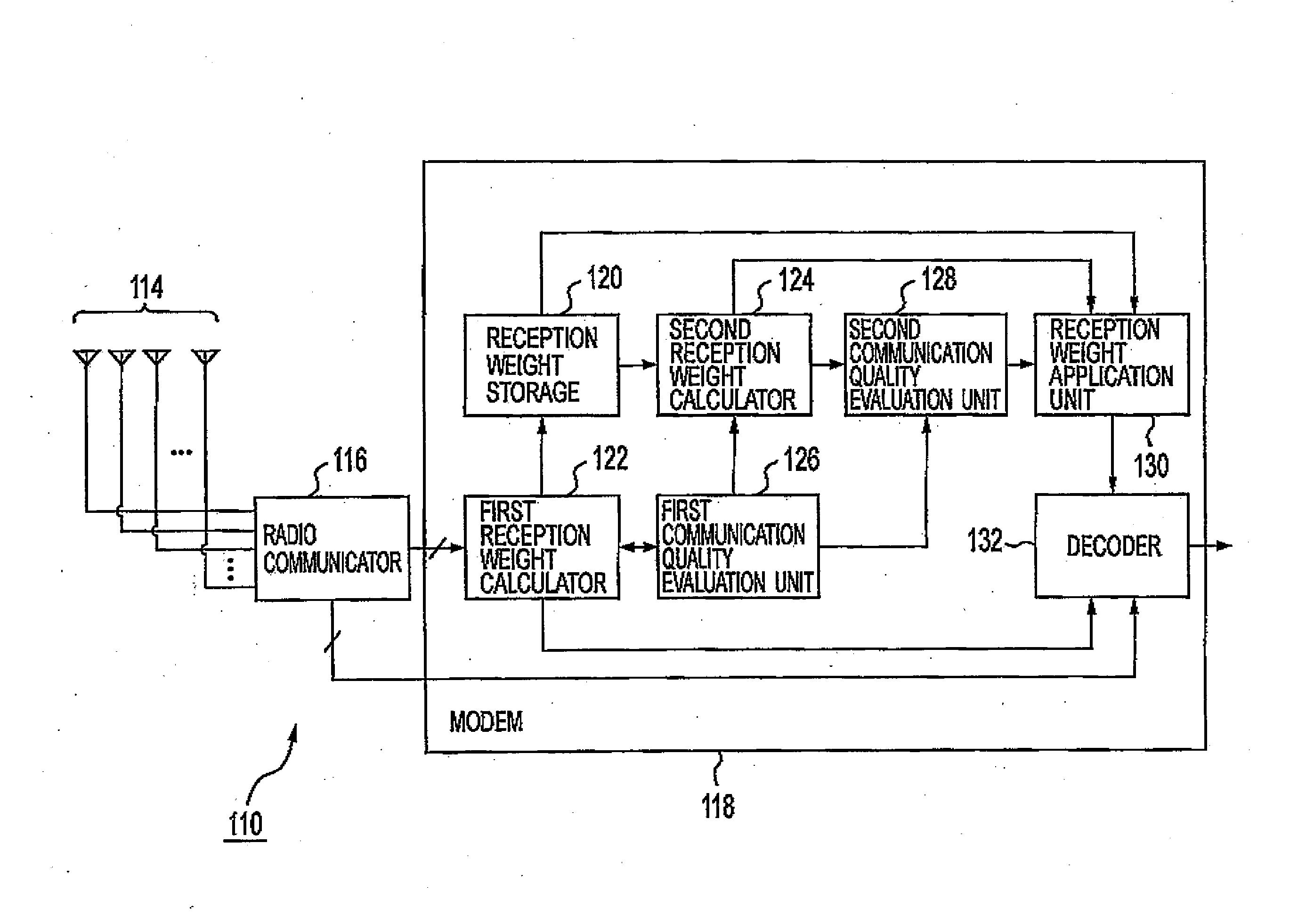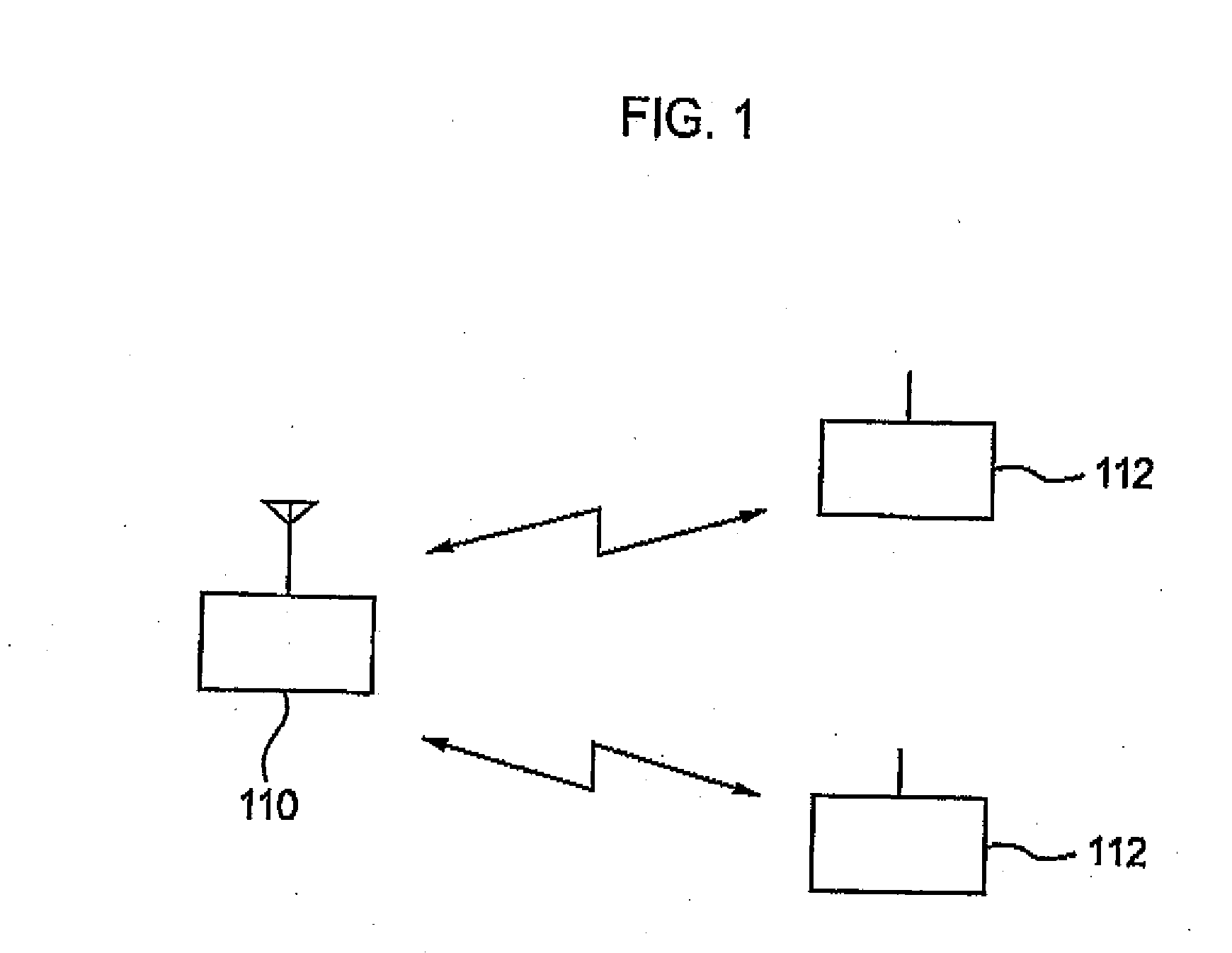Base Station Device, Method for Controlling Base Station Device, Receiving Device, Adaptation Algorithm Control Method, Radio Communication Device, and Radio Communication Method
- Summary
- Abstract
- Description
- Claims
- Application Information
AI Technical Summary
Benefits of technology
Problems solved by technology
Method used
Image
Examples
first embodiment
[0058]A first embodiment of the present invention will be described below on the basis of the drawings.
(Overall Configuration of Mobile Communication System)
[0059]FIG. 1 is an overall configuration diagram of a mobile communication system according to a first embodiment of the present invention. As shown in FIG. 1, the mobile communication system includes a base station device 110 and multiple mobile station devices 112 (2 in this embodiment). Each of the mobile station devices 112 is a portable phone or a data terminal, for example, and wirelessly communicates with the base station device 110. Here, the base station device 110 and each of the mobile station devices 112 transmit and receive data by using the TDD (Time Divisional Duplication) scheme and perform multiplex communications by using the TDMA (Time Division Multiple Access) scheme.
[0060]Further, the base station device 110 includes array antennas as described below, and performs multiplex communications with each of the mo...
second embodiment
[0085]Next, a second embodiment of the present invention will be described with reference to the drawings.
(Configuration of Receiving Device)
[0086]FIG. 5 is a block diagram showing a system configuration and functional blocks of a receiving device 201a according to a second embodiment of this implementation. As shown in FIG. 5, the receiving device 201a includes an adaptive controller 202a. The adaptive controller 202a includes ah array antenna formed of 4 antenna elements 210 (antenna element 210-0, 210-1, 210-2, 210-3). Further, the adaptive controller 202a also includes multipliers 211 (multiplier 211-0, 211-1, 211-2, 211-3) for the respective antenna elements 210.
[0087]Further, the adaptive controller 202a includes: a synthesizer 212, a synthesizer 213, a used adaptation algorithm changing unit 214, a PI controller 216, an MMSE controller 217, a desired wave power information acquisition unit 218, and an undesired wave power information acquisition unit 219. Furthermore, the use...
first modification
of Second Embodiment
[0112]Next, a first modification of the second embodiment of the present invention will be described with reference to the drawings.
[0113]FIG. 6 is a block diagram showing a system configuration and functional blocks of a receiving device 201b according to the first modification of the second embodiment of the present invention. As shown in FIG. 6, the receiving device 201b includes an adaptive controller 202b instead of the adaptive controller 202a. The adaptive controller 202b separates the multiplier 211-0 and the multiplier 211-1 in the above-described adaptive controller 202a into a multiplier 211-4 and a multiplier 211-6, and into a multiplier 211-5 and a multiplier 211-7, respectively. In the adaptive controller 202b, the MMSE controller 217 refers to a receiving wave after the PI controller 216 multiplies reception weight.
[0114]This enables the adaptive controller 202b to perform adaptive control by both PI and MMSE at all times. Thus, as in the second em...
PUM
 Login to View More
Login to View More Abstract
Description
Claims
Application Information
 Login to View More
Login to View More - R&D
- Intellectual Property
- Life Sciences
- Materials
- Tech Scout
- Unparalleled Data Quality
- Higher Quality Content
- 60% Fewer Hallucinations
Browse by: Latest US Patents, China's latest patents, Technical Efficacy Thesaurus, Application Domain, Technology Topic, Popular Technical Reports.
© 2025 PatSnap. All rights reserved.Legal|Privacy policy|Modern Slavery Act Transparency Statement|Sitemap|About US| Contact US: help@patsnap.com



